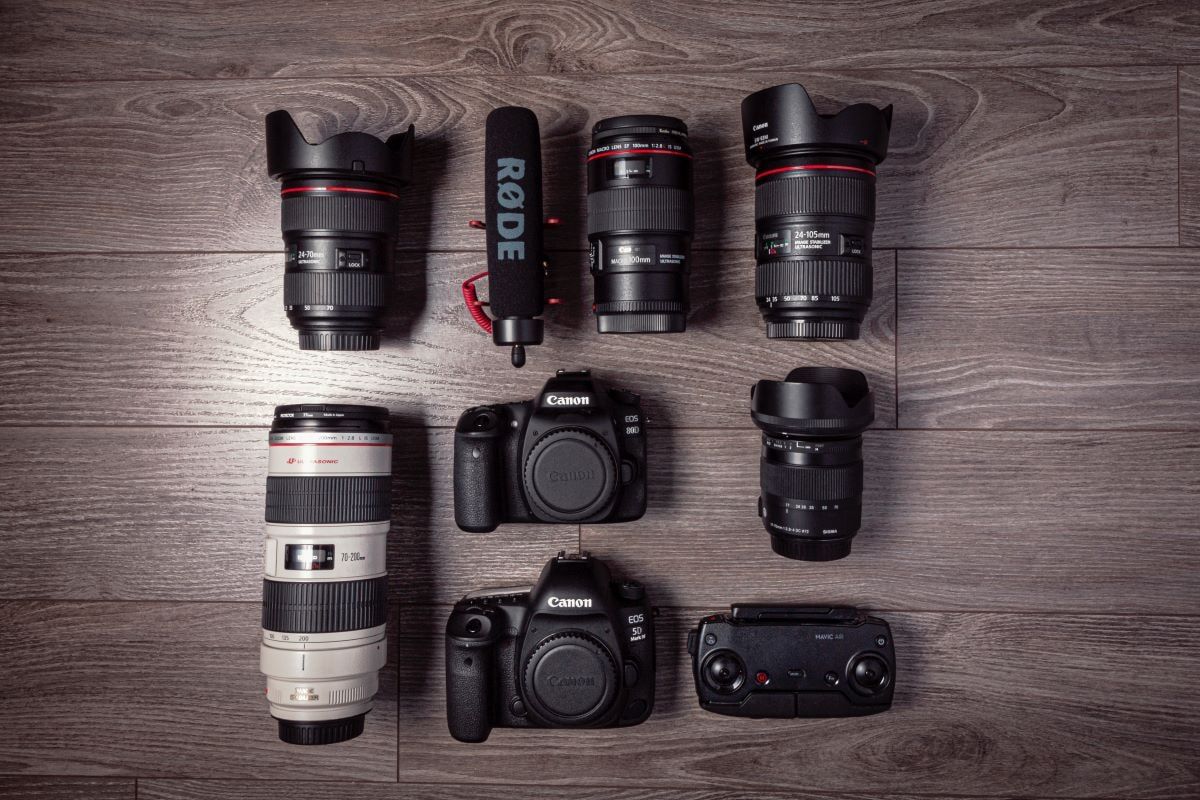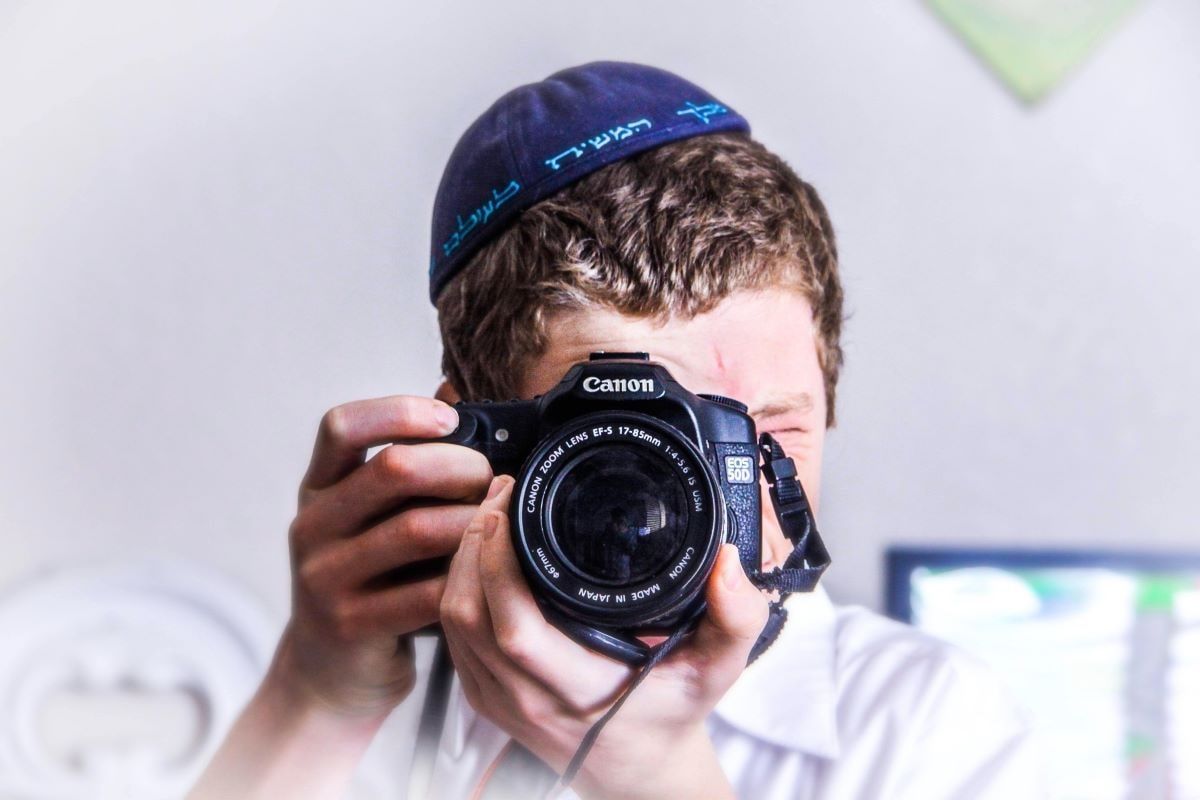Canon EOS C300 Mark III Review – To Get or Not to Get?
Rent film gear from local filmmakers.

Rent film gear from local filmmakers.
In 2020 Canon released its EOS C300 MK III, and now it is finally time for us to review the camera.
With a new design and a ton of new features, Canon has come back strong with this one. If you're a filmmaker, you should definitely keep on reading!
A camera is a great asset to have in your gearbox, but far from the only one. Explore what else there is of essential camera equipment.
Already decided? Don't hesitate and rent the best cameras on Wedio.
Canon EOS C300 Mark III key specs:
- Sensor: Super 35mm CMOS
- Processor: DIGIC DV7
- ISO: 100 - 102,400
- Monitor Size: 4.3″ Tilting (2,760k dots resolution)
- Lens: Canon EF Lens Mount
- Shutter speed: 1/200 - 1/12 Second
- Recording Specs: Cinema RAW Light and XF-AVC H.264 Codec
- Maximum video resolution: 2K Crop 180p and 4K/120p

6 Impressive features
There is no doubt that Canon's 2020 camera is a big upgrade from its predecessor. We have listed the 6 most impressive features of the new camera.
1. Image quality
The image quality on the EOS C300 Mark III is stellar. With the ability to shoot in 4K RAW, you're going to be able to capture some beautiful videos.
The camera has a built-in five-axis Electronic Image Stabilization. Image Stabilization is a technique that helps reduce blurring in the images.
It is perfect for situations where the camera is panning, tilting, or rotating. So if you're trying to get a good panning or dolly shot, this is a handy feature for the camera.
Furthermore, it has a high framerate with 120fps. 120 fps allows you to take full advantage of shooting in 4K.
The camera also supports High Dynamic Range support for those in need. Canon states that the EOS C300 MK iii can reach a dynamic range of 16+ stops. However, we haven't tested this statement.
2. Super 35mm Dual Gain output sensor
For the EOS C300 MK 3, they have implemented a Super 35mm lens which allows you to film anamorphic internally in the camera. However, it can't film in true anamorphic because of its small sensor height.
The Super 35mm lens also has DGO or Dual Gain Output.
Dual Gain Output is the technology that allows a camera to process between two different images: one prioritizing saturation in the highlighted areas and another prioritizing lower noise. These two images are then blended together to get the best of both worlds.
Canon has stated that using DGO (Which is mandatory with the EOS C300 MK iii) will help reduce noise. Dual Gain Output works perfectly with HDR, as it helps optimize the images.
3. Upgraded color science
With the new sensor, they have also improved on their color science. This means that you can capture even stronger colors than before.
Because of the Dual Gain Output sensor, you can capture a better saturation in the shots. This means that you get to capture true-to-real life colors. Or in other words, you can record almost exactly what you're seeing.
You can see the differences in people's skin tones and the camera's performance in natural environments.
4. 120fps capabilities for impressive slow motion
With the ability to capture 120 frames per second (fps), you can shoot some impressive slow-motion shots. The more frames per second your camera can shoot, the better it will look when it is slowed down.
While 120fps isn't close to the typical high-speed cameras used for slow motion, it is still impressive compared to what we're used to from Canon.
We have to remember that slow motion isn't the main selling point. But I digress.
The ability to shoot 120fps in 4K means you will have an easier time shooting some incredible establishing shots and B-roll. It comes in handy in both music videos and documentaries.
5. New Cinema RAW addition
The Canon Cinema RAW light was finally added to the Canon EOS C300 Mark III, and it's a most welcome feature.
The Canon Cinema RAW light is a compressed RAW codec that compresses your RAW files in a 5:1 ratio. It works great with different editing software despite having a bit shaky start.
The Canon Cinema RAW light format can optimize storage with reduced file size. The file format allows you to film with this reduced file size without hurting the image quality or grading.
It allows the filmmaker to achieve a better dynamic range without loss in the contrasting areas. It also offers flexibility to filmmakers to take more of the creative choices in post-production.
These are things like brightness, white balance, sharpness, color space, gamma, and more.
6. Improved form factor
Lastly, the EOS C300 MK III has had much-needed improvements in its form factor. While the previous edition was very tall and weird to handle the MK III has a more compact style, with a great monitor. They have also designed the body better in terms of the inputs and mount plate, so you are not as restricted as before.
The EOS C300 MK III is a much more streamlined product compared to its predecessor.

3 Faults in the EOS C300 Mark III
While it is a great product it is not perfect, and we have highlighted three of the eos c300 MK iii's biggest faults.
1. No timelapse function
Sadly the timelapse function is no more in the C300 MK III. Whether it was too complicated to implement, or they just simply forgot about it we don't know. All we know is that the timelapse function got cut, which is a shame.
2. Limited outputs
There's a limited amount of outputs. This can give you trouble if you are using multiple outputs while recording. We are unsure when/if this will get fixed by Canon. So be wary if you're planning to shoot and need to have multiple outputs.
3. Insecure IBIS
The In-Built Image Stabilization can be a bit janky sometimes when subjects move away from the center of the frame. While it isn't a huge problem, it takes a bit of practice to work around with.
Price and availability
The Canon EOS C300 Mark III will set you back around $10,999, and it is available at many different online and physical retailers.

Final verdict: Who should get the EOS C300 Mark III?
This camera is for freelance filmmakers working with narrative films, documentaries, or music videos.
While you could also shoot branded videos, I would say the camera's versatility gives you the ability to shoot more premium content as well. You can even do large productions with the camera having been Netflix-approved in 2020.
The camera's versatility puts it up among some of the best cameras out there!
Rent or subscribe to a Canon EOS C300 Mark III
I hope this article helped you decide if you want to get the Canon EOS C300 MK III. If you're not convinced, why not try it out yourself?
On Wedio you can rent or subscribe to various Canon cameras, and save money on your next project!
Camera Hire: Take Your Production to The Next Level
71PttfqWPXk
Camera Rental: Save Money with Wedio
5sHshmF1n_Y
Rent Camera Gear: Access Pro Equipment
qqHXJy6AWlc
About the instructors
FAQ
Does the Canon EOS C300 Mark III shoot RAW?
The Canon EOS C300 Mark III shoots in Canon Cinema RAW Light.
Does the Canon eos c300 mark iii shoot in 4k?
Yes.
Is the canon eos c300 mark iii Netflix approved?
Yes.
Does the canon eos c300 mark iii have ibis?
Yes.






















